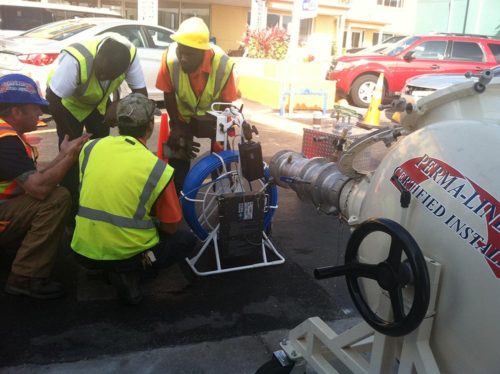Across the nation, sinkholes have become a more prevalent occurrence and can build up, unnoticed, over time and lead to a sudden collapse when the basin reaches the surface. Recently, the city of Detroit experienced this phenomenon leading to a massive sinkhole. However, there are indicators you can look for in advance. A few things to watch out for are new cracks in the foundations of houses and buildings, depressions in the ground, tilted trees or fence posts, doors or windows that become difficult to open or close, and cracks in interior wall structures. The city of Detroit is conducting a thorough examination of a leaking drainage system that caused the collapse and is responsible for up to eleven communities. Because of the 100 ft.-wide, 250ft- long sinkhole, a 14’ retaining wall has been put in place in order to redirect sewage to a temporary bypass system near the site of repair. At the site, disposable wipes have been discovered as a cause for clogging the bypass system. Additionally, it has been determined to slow down progress, as well as create complications with the sump pumps. The sinkhole has affected several homes, making it necessary for homeowners to relocate during reconstruction. The city is installing up to 250 steel cylinders, 70 feet deep. There will also be the utilization of a sewer inspection camera, in order to assist in determining the extent of the damage. Approximately 17 miles of pipeline will be evaluated. Due to the collapse, the entire sewer line will be rehabilitated and is expected to take several months.
Did you know the city of Detroit has expansive properties scattered across 139 square miles, with 3,000 miles of gravity-fed pipes beneath the city’s streets? There is enough space to make the significant improvement to the environment with large scale, green infrastructures.










